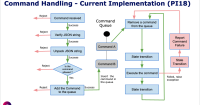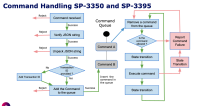Details
-
Enabler
-
Must have
-
True
-
Obs Mgt & Controls
-
-
-
Intra Program
-
1
-
1
-
0
-
REL-911 ska-tango-base with relaxed numpy
-
Team_KAROO
-
Sprint 5
-
-
-
-
20.6
-
Stories Completed, Solution Intent Updated, Outcomes Reviewed, NFRS met, Demonstrated, Satisfies Acceptance Criteria, Accepted by FO
-
-
Team_KAROO
Description
The current implementation of the ska-base-classes, when a command is received, immediately checks whether the command can be accepted, and if that's the case inserts the command in the input queue. The check is based on the current status (state, obsState and obsState, and other attributes, as appropriate for each command).
Given that most of the currently implemented commands causes a state transition, this means that devices are not able to accept two command (e.g. AssignResources and Configure) when they are received immediately one after the other. More precisely, if commands AssignResources and Configure are received immediately one after the other, while the subarray is in obsState=EMPTY, the first command (AssignResources) will be accepted and inserted in the input queue, and the Configure command will be rejected.
The goal of this enabler is to update implementation of the ska-tango-base to check 'is command allowed in the current state' only when a command is removed from the input queue. The attached diagrams show the current implementation and the intended implementation.

